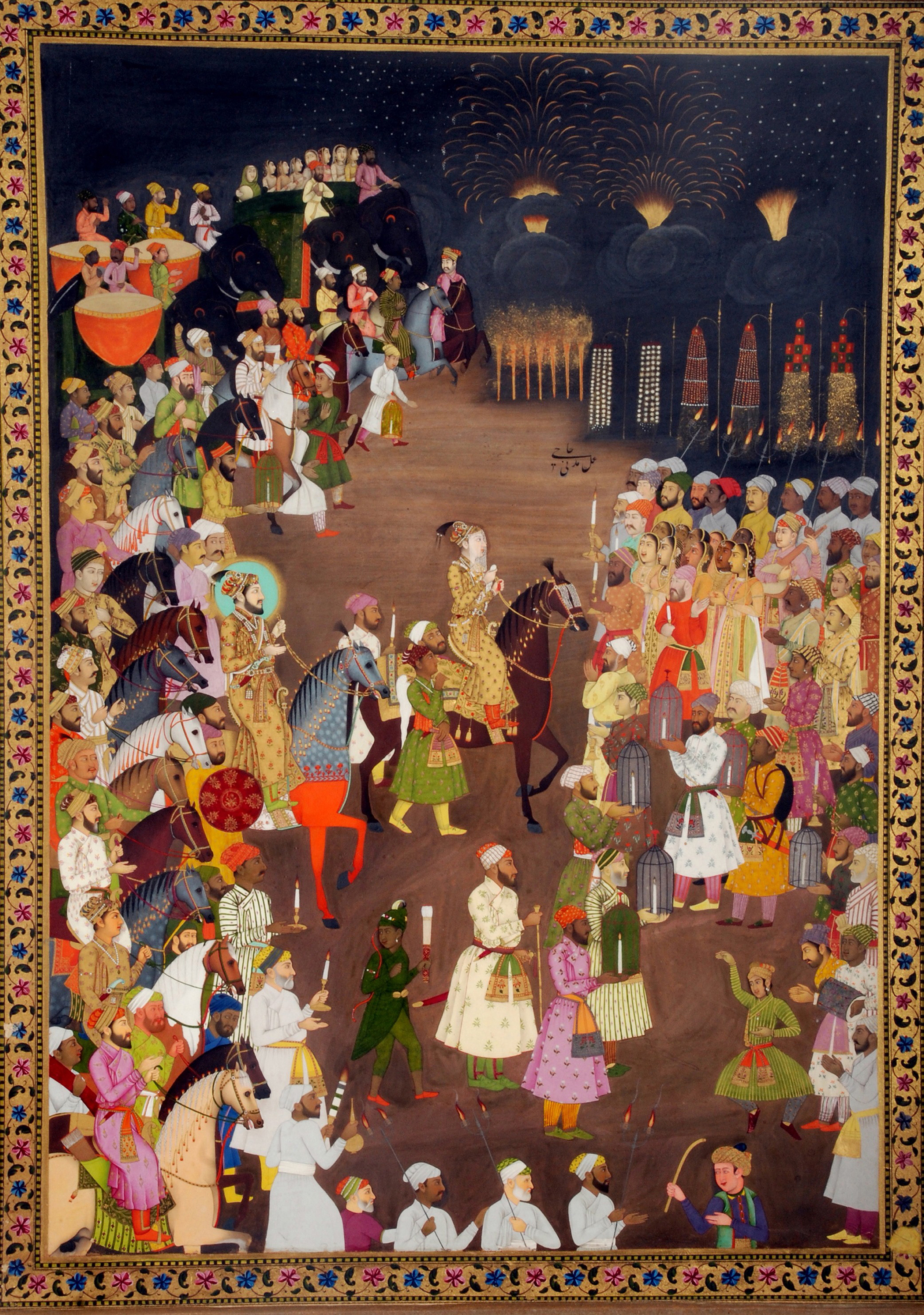Marriage Procession of Dara Shikoh
Original Location: Awadh
Present Location: National Museum, New Delhi
Date: 1740-1750 CE
Period: Early Modern
Material: Paper
Objects: Painting
Style: Mughal Miniature Painting
Dimensions: H 43 x W 32 cm
Credits: National Museum, New Delhi
This Mughal painting depicts the marriage procession of Dara Shikoh, son of Mughal Emperor Shah Jahan. It has its origin in Awadh and dates back to 1740 to 1750 CE. It is currently on display at the National Museum, New Delhi.
The painting depicts the marriage ceremony of Dara Shikoh, the eldest son of Mughal emperor, Shah Jahan (1628-1658) by an anonymous painter. He was married to Nadira Banu Begum, daughter of Prince Parwez, the second son of Mughal emperor Jahangir (1605-27 CE) in 1633 CE. The Padshahnama of Abdul Hamid Lahori which is the chief source regarding this marriage informs us that the wedding was arranged by Jahanara, daughter of Emperor Shah Jahan and Sati un-Nisa Khanum, the chief maid of the late empress, Mumtaz Mahal. The wedding was an extravagant affair with the exorbitant investment of thirty two lakh rupees out of which six lakh came from the imperial treasury, sixteen lakh was contributed by Jahanara and the rest by the bride’s mother. In the Diwan-i-Khas, the hinabandi or the henna ceremony took place and in the Diwan-i-Am, the wedding gifts were exhibited for the members of imperial household and the nobles. Cardamom, dry fruits and betel leaf or paan was distributed among the attendants of the wedding.
The painting portrays the opulent celebration of the wedding. The groom, Dara Shikoh is wearing a highly jewelled Kabayi or tunic which was the standard dress of the imperial household and nobles during the medieval and early modern period. He is also shown wearing a Sehra around his head. He is accompanied by his father, Emperor Shah Jahan mounted over a distinctive horse with a halo around his head, signifying the divine illumination or farr-i-izadi which was the hallmark of legitimate Mughal Kingship. The procession includes imperial family members and nobles mounted on horses and elephants seen being welcomed by the bride’s side with candles while drumbeats and firecrackers add magnificence in the backdrop.
The artefact is a miniature painting, the dominant style of Mughal art done on paper. Miniatures were painted as illustrations to imperial court chronicles or just single paintings in albums. Despite its small size, the painting is a blend of bold colours, intricate details of facial features and jewelry dress patterns. It is bordered with a flower pattern. The brilliance lies in condensing three-dimensional figures within a two-dimensional landscape which was solved through a Jahangiri formula using a flat terrain as a neutral background for the figure arrangement and expanding it at top into a distant topographical vista.
 Government of Indiaa
Government of Indiaa


 Recognizing the ongoing need to position itself for the digital future, Indian Culture is an initiative by the Ministry of Culture. A platform that hosts data of cultural relevance from various repositories and institutions all over India.
Recognizing the ongoing need to position itself for the digital future, Indian Culture is an initiative by the Ministry of Culture. A platform that hosts data of cultural relevance from various repositories and institutions all over India.
